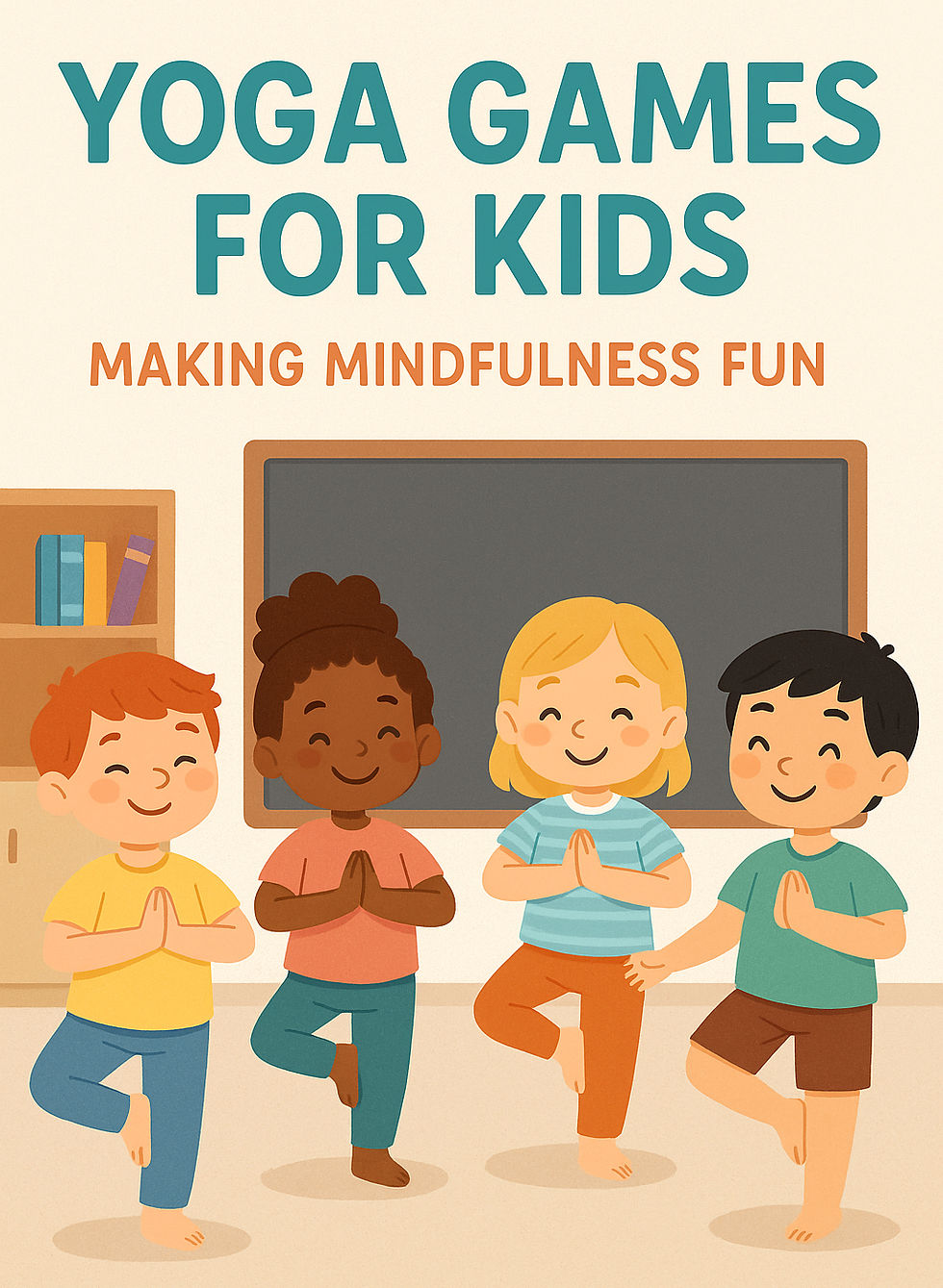5 Simple Yoga Poses Every Kid Should Know: A Beginner-Friendly Guide for Parents & Educators
- Jordan Concannon
- Feb 24
- 3 min read
Quick Look:
Introduction
Benefits of Teaching Yoga Poses to Kids
5 Simple Yoga Poses for Kids
Tips for Teaching Yoga to Kids
Conclusion
References and Additional Resources
Yoga is a wonderful tool for children, offering numerous physical, mental, and emotional benefits. For parents and educators, introducing kids to yoga can be both rewarding and fun. This guide highlights five simple yoga poses every child should know, along with tips to make the practice enjoyable and accessible.

Benefits of Teaching Yoga Poses to Kids
Yoga helps children improve their flexibility, strength, balance, and coordination. Beyond physical benefits, it enhances focus, reduces stress, and fosters emotional resilience. Teaching kids yoga equips them with lifelong tools for well-being.
5 Simple Yoga Poses for Kids

Mountain Pose (Tadasana)
Mountain Pose is a foundational yoga pose that promotes good posture and balance.
How to Do It: Stand tall with feet together, arms at sides. Inhale deeply, lift arms overhead, and stretch upwards.
Benefits: Improves posture, balance, and focus.

Downward Dog (Adho Mukha Svanasana)
A popular pose that stretches the entire body.
How to Do It: Start on hands and knees. Lift hips upward, forming an inverted V shape.
Benefits: Stretches muscles, strengthens arms and legs.

Cat-Cow Pose (Marjaryasana-Bitilasana)
This flowing sequence helps with flexibility and relaxation.
How to Do It: On hands and knees, alternate between arching the back (Cow) and rounding it (Cat).
Benefits: Enhances spinal flexibility and calms the mind.

Tree Pose (Vrksasana)
A balancing pose that builds focus and stability.
How to Do It: Stand tall, place one foot on the opposite inner thigh, and bring hands to prayer position.
Benefits: Improves balance, concentration, and core strength.

Child's Pose (Balasana)
A calming pose perfect for rest and relaxation.
How to Do It: Kneel, sit back on heels, and stretch arms forward while lowering the forehead to the mat.
Benefits: Relaxes the body, relieves stress, and stretches the back.
Tips for Teaching Yoga to Kids
Make it Fun: Use stories, games, and themes to keep kids engaged.
Be Patient: Allow kids to explore poses at their own pace.
Create a Routine: Regular practice builds familiarity and confidence.
Use Props: Yoga mats, blocks, and visuals can enhance the experience.
Encourage Creativity: Let kids invent their own poses or name existing ones.
Introducing kids to yoga through simple poses lays the foundation for a lifelong practice. These five poses offer a great starting point for parents and educators to help children develop physically, mentally, and emotionally.
At Root and Roar Yoga, we're passionate about making yoga accessible and fun for children. Let's inspire young minds and bodies through mindful movement and joyful exploration.




Comments